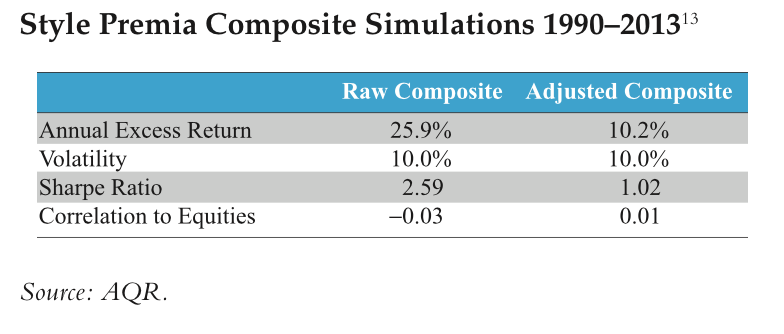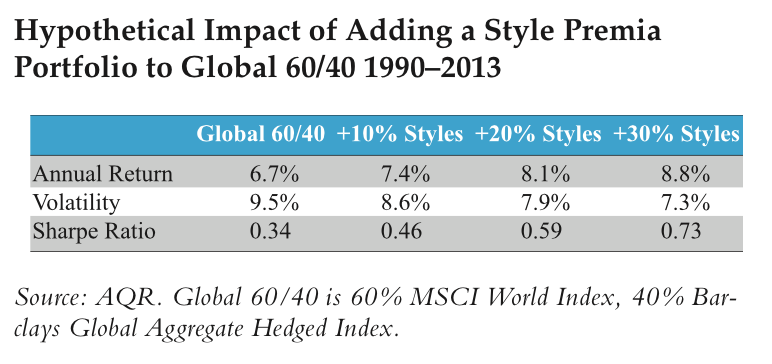 In the 1950s and 1960s, Harry Markowitz and Bill
Sharpe set the scene for portfolio management as we know it today. The
economists won a Nobel Prize for their efforts; their work was a giant step
forward for its time.
In the 1950s and 1960s, Harry Markowitz and Bill
Sharpe set the scene for portfolio management as we know it today. The
economists won a Nobel Prize for their efforts; their work was a giant step
forward for its time.
But since then,
the exponential growth in computing power—as predicted by Intel founder Gordon
Moore in his 1965 paper—has the potential to revolutionise our understanding of
risk and the way we manage it. It has exposed the investment management
industry’s dangerously oversimplified view of what risk really is.
“Moore’s Law,”
as it has come to be known, has given us the power to make another step change
in our understanding of risk and return. In the future, successful asset owners
and asset managers are going to listen to Albert Einstein’s advice that we
should always make things as simple as we can—but no simpler. They will
acknowledge:
- Tail events
are much more likely than a normally distributed world envisaged by Sharpe
would suggest, and they will not be surprised when these occur.
- Naïve use of
volatility as a risk measure serves little purpose. Markowitz’s idea of
mean-variance optimisation will become a thing of the past. We will use the
power that Moore’s Law has given us to move our models closer to reality, which
means at a minimum:
- Moving from time- to money-weighted returns.
- Recognising that valuation risk is investor specific.
- There are
risks and opportunities that no backward-looking statistical measure will ever
capture. However, we will be foolish in the extreme if we do not try to take
into account within our portfolios things that we really should expect to
happen. What will be our excuse for having ignored climate change when
disruptive technologies make large parts of our portfolios obsolete? To do this
we must think and act as long-term investors.
Markowitz’s 1952
work, “Portfolio Selection,” introduced the concept of mean-variance efficient
portfolios, where risk was defined as the volatility (standard deviation) of
returns. An efficient portfolio was one that gave the highest return for a
given level of risk. All this was well and good in theory, but it was
impossible to implement at the time: We simply did not have the computing power
to handle the large scale matrices of returns, volatilities, and correlations
involved.
Sharpe published
his seminal paper on the Capital Asset Pricing Model in 1964. The ideas set out
finally made the concepts of Markowitz’s work tractable. Sharpe made the
entirely plausible assumption that return and risk were linearly correlated.
After all, why would an investor accept higher volatility if it was not
compensated by higher return? This simple idea allowed Sharpe to introduce a
single risk measure—beta, the volatility of an asset relative to the market. In
so doing, the computational limitations of Markowitz model were overcome.
Falling out of
this work were two other conclusions: Returns should be independent and
identically distributed or follow a normal distribution, and the market
portfolio provided the highest possible return-to-risk ratio.
As Moore’s Law
rolled forward, not only did computing power grow exponentially, but so did the
data we had on stock prices and markets. This allowed us to test Sharpe’s
assumptions. We found that returns and volatility were not linearly related,
returns were not independent, and distributions were not normal.
All of Sharpe’s
key assumptions were wrong. That does not mean that the market portfolio is
easy to beat. It isn’t. We still have the truism that the return to all
investors is the market return minus costs. Investors as a whole must earn less
than the market.
That returns are
not normally distributed, but fat-tailed, means we should expect outlier
returns or tail events to be far more common than we would expect from an
efficient market as described by Markowitz and Sharpe. To our cost, we have
experienced exactly that.
If our
regulators allow us, the smart part of the industry will start to act in a
counter-cyclical fashion. That, after all, is how you buy low and sell dear. To
do that, asset owners and asset managers will need to reorganise themselves and
adopt a different governance model. Market-related benchmarks will become
secondary. Real-world outcome benchmarks will take centre stage. That should be
welcomed by asset owners and managers alike.
Alan Brown is the former Group CIO of Schroders.



